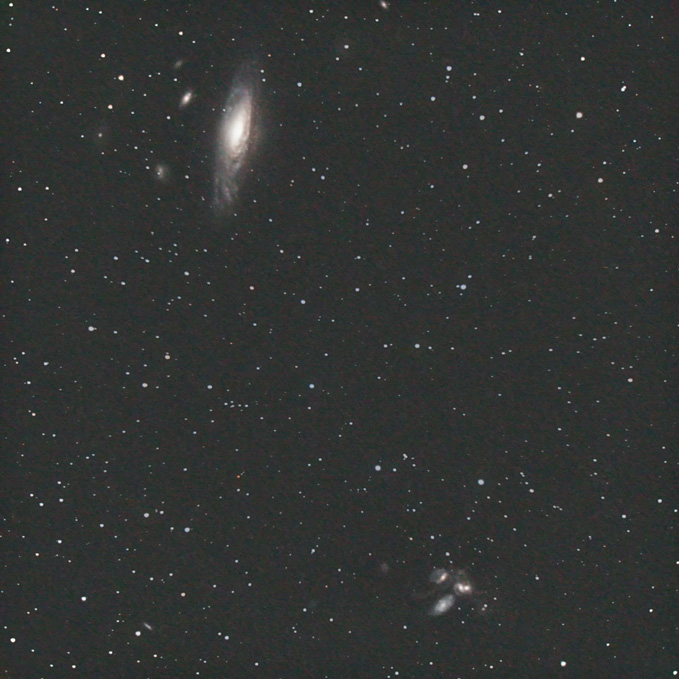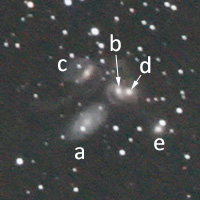| NGC7331 / Galaxy, type SA(s)b I-II |
|---|
| R.A. | 22h 37m 6.0s (2000.0) |
|---|
| Dec. | +34° 24' 59" (2000.0) |
|---|
| Apparent Size | 10.0×3.0' |
|---|
| Radial Velocity | +1033km/s |
|---|
| Magnitude | 10.3 |
|---|
| Distance | 48 million light yrs. |
|---|
| Group of Galaxies | NGC7331 Group |
|---|
| Other IDs | UGC12113, MCG6-49-45
CGCG514-68, PGC69327 |
|---|
We can find a tiny galaxy of NGC7331 about 9 degrees NW of beta Pegasi, locating at the north west star of Pegasus's square.
The galaxy shows us a bit slant from being edge-on, nearly same angle with the Andromeda Galaxy (M31).
And it's detectable a crossing dark lane on pictures with long-exposure.
You can appreciate a bright nucleus and surrounding fine light through medium-sized telescopes.
You can find a very famous compact group of galaxies, "Stephan's quintet" nearly 30 arc minutes south of NGC7331.
This nickname came from that an astronomer A.E.Stephan introduced this group in his paper in 1877.
Five indistinct ellipses can be seen by magnifying the field circled in upper image.
Now many other compact group of galaxies like the Stephan's quintet have been discovered in heavens, and they're registered in a catalogue of "Hickson's Compact Group (HCG)".
Stephan's quintet has a number of HCG92. Members of Stephan's quintet have codes from a to e,
it's considered that galaxy "a" has no relations with other members and galaxies "b" and "d" are just colliding.
Recently, evidence has discovered that over one million supernovae had exploded simultaneously in a member of this group;
many astronomical topics can be written about the Stephan's quintet.
⇒ Display the spectral profile of NGC7331 (in new window)
|


